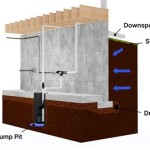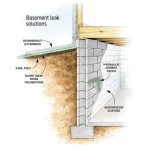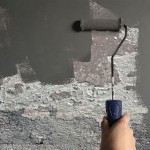Flooded Basement: What You Need to Do
Finding your basement flooded can be a stressful and overwhelming experience. Water damage can cause significant structural damage and lead to the growth of mold and mildew. It's crucial to act quickly and take the necessary steps to mitigate the damage and protect your home.
Safety First
Before entering the flooded basement, ensure it is safe to do so. Turn off the electricity at the main breaker panel to prevent electrocution. Wear protective clothing, including rubber boots, gloves, and a mask. If the water level is too high, do not attempt to enter the basement. Call a professional for assistance.
Remove Standing Water
The first step is to remove as much standing water as possible. Use a sump pump or wet/dry vacuum to pump out the water. Place the pump in the lowest part of the basement and connect it to a discharge hose that directs the water outside. Continue pumping until the water level is significantly reduced.
Clean and Disinfect
Once the standing water is removed, thoroughly clean and disinfect the basement. Use a bleach solution or commercial cleaner to kill bacteria and mold. Remove all soaked or water-damaged items, such as furniture, carpeting, and drywall. Discard any contaminated food or drinks. Open windows and doors to air out the basement and promote drying.
Dry the Basement
Properly drying the basement is essential to prevent дальнейшее damage and mold growth. Use fans, dehumidifiers, and open windows to circulate air and remove moisture. You may also need to use a commercial drying service to ensure the basement is completely dry. Monitor the humidity levels and keep them below 50% to prevent mold growth.
Inspect and Repair Damage
Once the basement is dry, inspect for any structural damage. Check for cracks in walls, floors, and ceilings. Look for signs of mold or mildew growth. Repair any damaged areas promptly to prevent further deterioration. Contact a professional for major repairs, such as foundation work or electrical issues.
Prevent Future Flooding
After cleaning up a flooded basement, take steps to prevent future flooding. Check gutters and downspouts to ensure they are clear of debris and direct water away from the house. Consider installing a sump pump or French drain to manage excess water. Seal any cracks or gaps around windows, doors, and pipes. Elevate appliances and other valuable items to a higher level in case of another flood.
Conclusion
Dealing with a flooded basement can be a daunting task, but following these steps can help you mitigate damage and protect your home. Remember to prioritize safety, remove standing water, clean and disinfect, dry the basement, inspect for damage, and implement preventive measures to reduce the risk of future flooding.

Flooded Basement Cleanup Who To Hire And Steps Take Bob Vila

Flooded Basement Cleaning Rapid Water Extraction Drying Service

Water In Your Basement What To Do And Who Call Forbes Home

6 Simple Ways To Prevent Basement Flooding American Dry

How To Clean A Flooded Basement Reviews By Wirecutter

Handling Basement Flooding And Prevention

5 Tips For Managing Basement Floods Insofast Insulation Panels

What Happens When Your Basement Floods Virginia Restoration Srvcs

5 Organization Tips To Reduce Basement Flood Damage

Flooded Basement Will My Insurance Cover Nytdr
See Also








